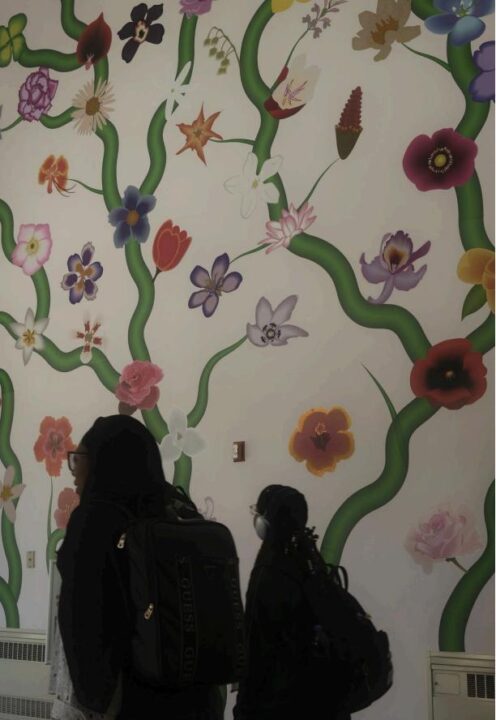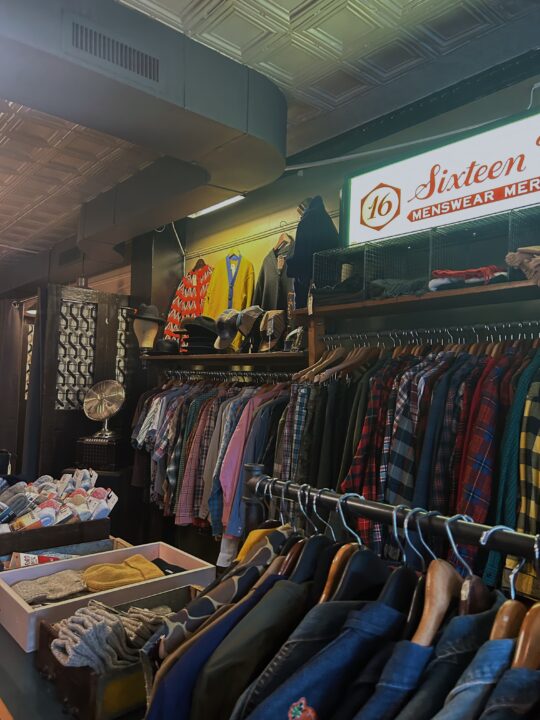“If you study the culture and art of African Americans you are not studying a regional or minor culture. What you are studying is America. The access, the root, the culture of the people of this country is interdisciplinary, it’s provocative, it’s reflective and it’s about you and me.”
~Toni Morrison
The University of Maryland, Baltimore County Association of Black Artists, relatively new among UMBC student groups, is an organization committed to ensuring that the voices of Black UMBC student artists are heard, providing a space for community discussion, collaboration and participation. This Black History Month, The Retriever sat down with two members of ABA, senior cinematic arts major and president Manal Murangi, and freshman computer engineering major Toni-Ann Pearson. Though the conversation began simply as an overview of the ABA, the topic was soon eclipsed by a deeper conversation, one of Black voices, Black art and Black America.
For an interview, a Zoom call is never the ideal. Lacking the unhurried spontaneity of face-to-face interaction, forever at the mercy of connectivity issues, a good conversation over a Zoom call is hard to find. Yet the excitement from Pearson and Murangi is palpable even through the screen. From the first question, a passion for Black art and Black representation is evident:
“So to start off, we should talk a little bit just about ABA. What was the idea behind starting an organization for Black artists?”
Pearson: “Well, I think that the meaning [of Blackness] changes for every individual. Blackness in and of itself isn’t monolithic. It’s important to bring your own experiences as a Black person to your art — which I think happens anyway, art is just a byproduct of our experiences, right? No matter what you do, you’ll pour your experience into your art … ABA, to me, is a space where I can bring all of that experience in a way that provides camaraderie! It’s something like cultural sustenance, you know? Sustenance and companionship.”
Murangi: “In the eyes of the pandemic, it’s hard to make connections more than ever, even within your classes … . It’s good to have a place that you can come to and say, ‘Oh yeah, these are people I can relate to.’ Not only on a race level, but a personality level! Being artistic is a lifestyle, that’s great in and of itself, but having a community to relate to is very important … . There’s a lot of diversity at UMBC, that’s true, but it varies by discipline. Black people often aren’t told they can be artists, and especially coming from immigrant parents, I was told art wasn’t really a pathway for me.”
This theme, of non-monolithic experience, follows the conversation through to the very end, and it is an important one to consider. As important as community is, it is even more important to recognize the experience of the individual, something which art, more than anything else, may provide.
“So, what does an average ABA meeting look like? How often do you guys meet?”
Murangi: “So, we have group meetings every two weeks — of course over WebEx Teams, everybody’s favorite application! At the beginning of the semester we were mostly just planning things out, trying to figure out how we could work through the pandemic together. We’re a new organization, and we just started last year, so we’re figuring structural points out, but for most regular meetings we usually have a check in, and then we roll into discussions. Some meetings are more geared towards discussing Blackness, Black art, being Black in America, etc. Other meetings are more focused on the craft, being an artist, that kind of thing. It’s kind of supposed to be a community and a resource, a network for artists.”
Pearson: “Especially as a STEM major, these meetings are really helpful for me. Just having a space for ‘art,’ in general, is really fantastic. Being able to exist in a space, being able to let whatever comes out come out, it’s beautiful. The potential for collaboration is great to see.”
The question of Black voices in art is a particularly salient point, both for Pearson and for Murangi. Art is, at its essence, self-expression. At its best, this self-expression can even push others to empathy, helping to cultivate what Pearson calls the “cultural sustenance” of America.
“What do you guys think about Black representation within the past decade or so? Art which has really contributed to meaningful discussions around race within the US, that kind of thing. Has there been progress, stagnation, or something else?”
Pearson: “Well, I really love art which shows life, in general. A lot of older media liked to portray Black living very stereotypically, but I really love things which just show life. Something like Insecure, with Issa Rae. Even though most of the characters within ‘Insecure‘ are Black, a lot of them are just going through human problems, from a Black perspective. Not every Black person is from the ghetto, not every Black person is fantastic at sports — I cannot throw, Julian, I cannot throw. Just to portray people being is a huge development to see — realistic, grounded, Black characters.”
Murangi: “Well, I have a lot of thoughts on this. With Twitter, especially Black Twitter, we’re at a point in life where we can see these other perspectives and relate. In terms of projects — well, I’d say we’re approaching something like a second Black Renaissance. There’s ‘Insecure,’ there’s ‘Get Out,’ there’s ‘Moonlight,’ there’s ‘Us,’ there’s ‘Judah and the Black Messiah,’ there are so many Black stories being told by Black people, and the accessibility of modern living enables that … . Rap and hip hop are the most popular genres in the country right now, and those are historically Black genres! It used to be, your name had to be huge — you had to be a Nina Simone, a Billie Holiday, a Langston Hughes, a James Baldwin — or you were irrelevant. I’m seeing so many more Black artists on my feeds, and we’re at this moment where Black people are able to tell their own stories, not at the benefit of anybody else, but for ourselves. The accessibility of things is important.”
It is very true, Black voices in America — historically, stifled both by economic and sociopolitical burdens — have found new means to resonate. In an entertainment industry founded on minstrel shows, Black erasure, and unfair representation, such opportunities deserve to be celebrated.
Black voices have always been entwined with American culture; jazz and blues music are, perhaps, some of the only mainstream genres native to American soil, and without Black artists such as Robert Johnson, Son House and Blind Willie McTell, America would lack such an identity. As Murangi states, however, it is only in the past few decades that Black artists have had volition and control over the production of their art.
“It’s always been a struggle, being Black and navigating a whiter world,” Pearson goes on to say. “As a Black artist, you ask, ‘who am I creating for?’ As an engineer, you ask, ‘who do I give my talents to?’ But I think, today, because of the Internet, it’s like, ‘just do what you want.’ It’s empowering. Complete control over your art.”
Even beyond cultural touchstones, Black voices are a crucial (and crucially undervalued) piece of American history. It is all too easy to to recite the names Frederick Douglass, Harriet Tubman and Dr. Martin Luther King, Jr. in a classroom, but a true understanding of Black America is critically lacking in mainstream education. Black History Month has already been discussed in a previous “Retriever” article by Sam Adebesin, and the flaws inherent in the very concept of a “Black history month” have been reported at length. On this topic, Murangi and Pearson have a good deal to say:
Murangi: “Okay, well … I have my thoughts. It’s a hard point to discuss; sure, it gives people an excuse to pay attention, but the fact is, most people aren’t paying attention anyways! I personally don’t really care how people see it, and I don’t necessarily need a month to celebrate Black history. I celebrate it every day! You could say maybe the purpose of Black History Month is to appease white people, but I don’t know, I’m torn. It’s not like I have a huge personal connection to Black History Month, and I know it might simply be for white guilt, but at the same time, I’ll celebrate Black history anyways. I mean, it’s not like, ‘oh, yes, every February, racism is over.’ We all know the ‘Scandal‘ quote, ‘I have to work twice as hard to get half as much.’ It’s gonna be true at the beginning of February, it’s gonna be true at the end of February and it’s gonna be true for the rest of my life … . So, maybe Black History Month is just token. It’s a little sticker, right? But maybe you have to personalize it.”
Pearson: “A lot of modern Black studies owes a debt to Carter G. Woodson. He was a Black scholar, and long story short, he was one of the very first people in America to advocate for Black studies. Woodson founded Black History Month — well, it started as Negro History Week — as a means not only to celebrate Black culture, but to understand it. Knowing the history of Blacks in America teaches context, and when you see evolution, you can see how things might get better.” Then a sigh from Pearson. “The evolution of Black History Month is a little bit of a shame. It’s like Pride Month. You know, AT&T cares about LGBT people for a whole month, and then right on the dot, July first, that logo goes back from the rainbow to blue and white. We make a big deal out of these months, but like, what do you really learn from them? It’s more like pacification, really, not actual education. Like Manal said, Black history is being made every second of every day, and it deserves to be celebrated in the same way we celebrate Renaissance artists … . Our stories are just human stories, right? Different perspectives of the same thing. So whatever, Black History Month is cool, it gives white people an excuse to care, but to me, it really doesn’t do much.”
It is another salient point brought up in the interview: “white guilt” can be as much a detriment as a positive. Making bland moral generalizations and remembering historical figures is nothing next to real, structural change, and right in the middle of Black History Month, Pearson and Murangi make this point all too clear.
Murangi ends the interview with a thoughtful note: “Black Americans have to create history and create culture because our previous culture was erased.” Indeed, the scars of Black erasure are felt to this day, but as Murangi points out, work can still be done to create these histories, contexts and cultures. Whether or not Black History Month is a sticker, a sham or an alleviation for white guilt, it is important to remember now and in the future that Black voices, Black history and Black lives, have mattered, do matter, and will continue to matter.
Just make sure you do not forget about that when February is over.
Editor’s note: Manal Murangi is currently president of the ABA, not vice president.


